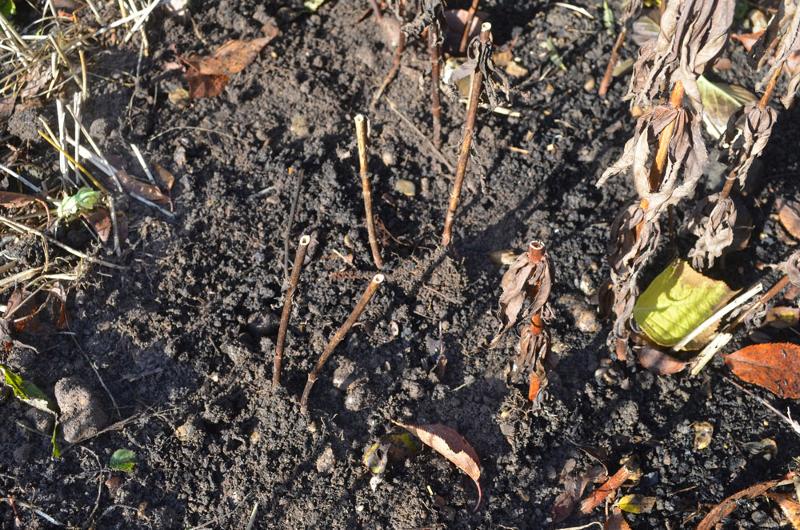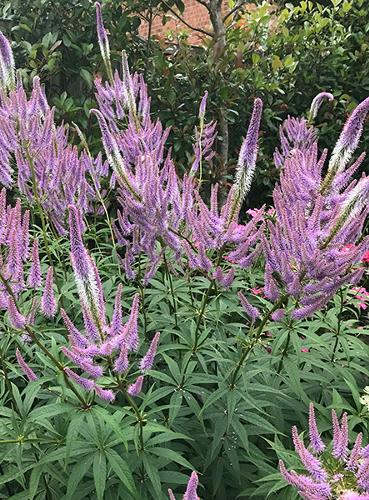Dividing perennials to fill out your herbaceous borders
When designing gardens for my clients one of the most important questions I ask is how “hands on” they wish to be with ongoing development of the garden. If perennial borders are part of the design, there is a line to be drawn between filling it completely for instant impact or filling it to a point, which allows the owner to expand the planting themselves. This can be done in a number of ways. One of the easiest ways, even for a novice gardener, of building your herbaceous borders is by division. Or otherwise known as ‘asexual' propagation.
The method of ‘asexual' propagation or just simply ‘division' is a technique that is best used in early spring, when the ground is starting to warm up. To know which plants can be divided just check on the RHS website under the plant name and check ‘propagation'. Plants which can be divided tend to be those with a fibrous root system shown in the drawing below right.
‘Fibrous' root systems are root systems which develop multiple thread like strands of similar diameter roots branching out from the base of the stem. Some of the roots send up new shoots, which subsequently develop into more stems above ground. This naturally developing growth can eventually diminish, as the root systems intermingle, and ‘mesh with other plants, leading to the plant root system becoming compacted. This limits the plants' access to nutrients from the soil and ability to create new shoots.
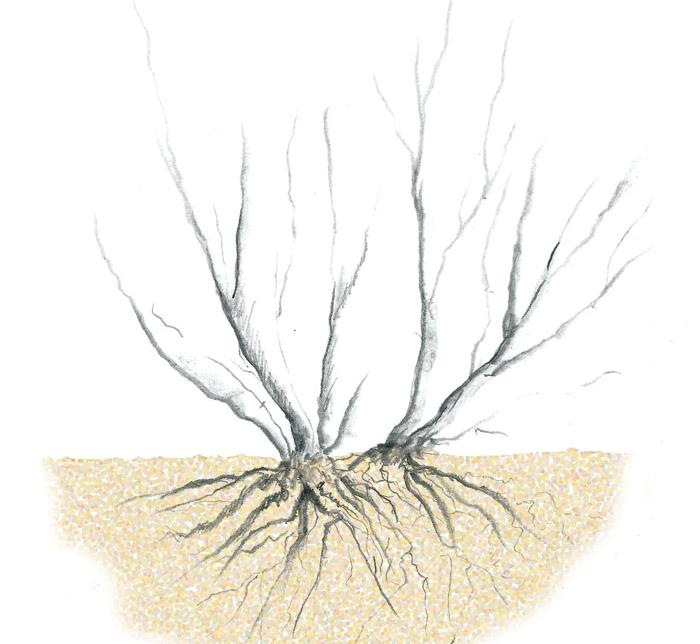
To make dividing plants easier still, I tend to leave cutting back of herbaceous plants until the spring which makes identification of what you are dividing a bit easier. Hopefully following the steps laid out below it'll help you develop your own garden borders without hitting your wallet
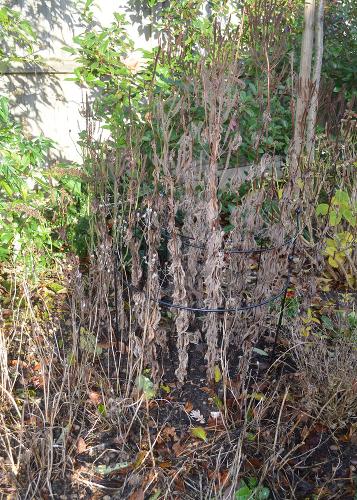
1/. Firstly, select the plant you wish to divide and for this exercise I have chosen a group of Veronicastrum or ‘Culvers root', which I have been expanding over the last few years.
The group in the photograph (left) is set amongst many other plants so a degree of care is essential to avoid damaging other plants.
Like many herbaceous plants, Veronicastrum develop ‘Fibrous' root systems, so typical of a plant which can be divided. Dividing the plants (effectively breaking and opening the root system up) will create new shoots, healthier growth and expand you border.
This can also be done to create plants for new borders. This can add unity to your gardens future design.
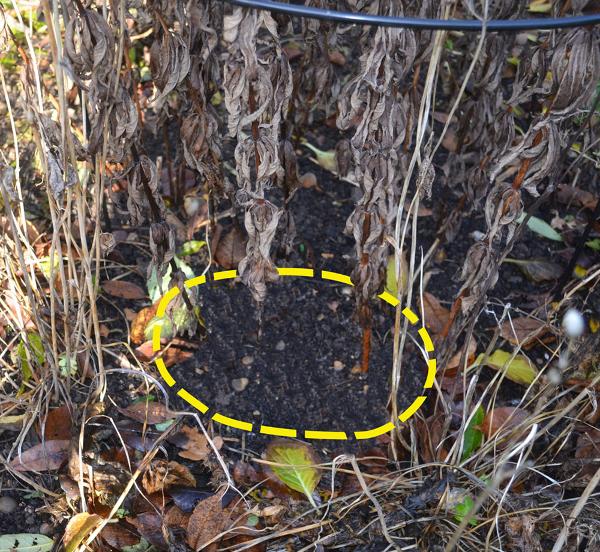
It's not always easy to see where plants have become ‘congested' but just look for multiple stems that appear to be developing too close to each other. To make it easier to see the clump of plants I will be separating, remove fallen leaves and other debris around the plant base, shown here with by the yellow dotted line.
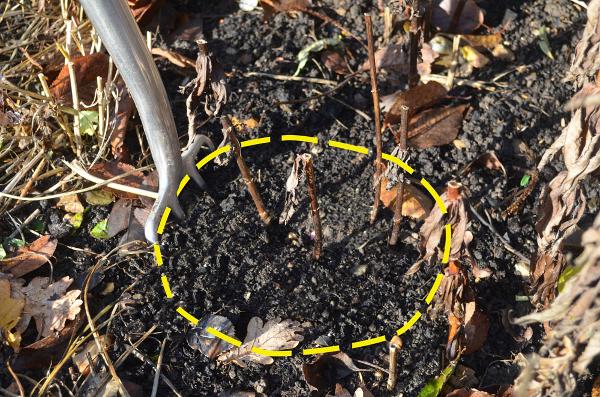
To make separation easier cut last year's stems down to around 200mm and remove any plant supports.
2/. Using a suitable sized fork (in this case a ‘border' fork) dig into the surrounding earth loosening the group all the way around from surrounding plants. Shown by the yellow dotted line.
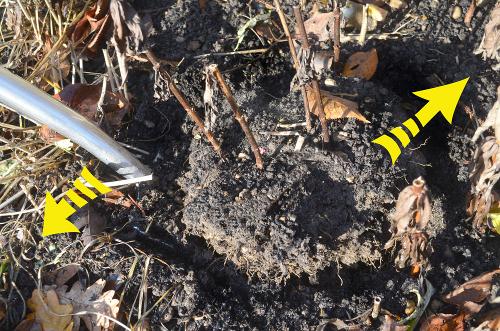
Once you have isolated the root system from surrounding plants ‘gently' ease the root system loose, levering against the surrounding earth. You may notice some dull ‘cracking' noises where roots break that may not have been entirely free but providing you have a reasonable size clump the plant should be unaffected.
Then lift the clump out of the soil.
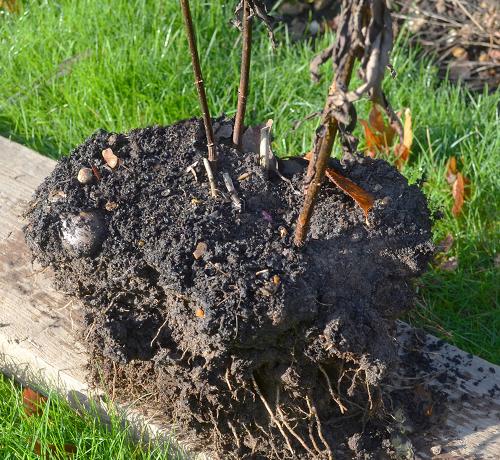
3/. Move the clump to a space where you can divide it without crushing other plants. It helps to make sure the root ball is placed on a firm base to avoid it moving or rolling as you divide the clump of roots up.
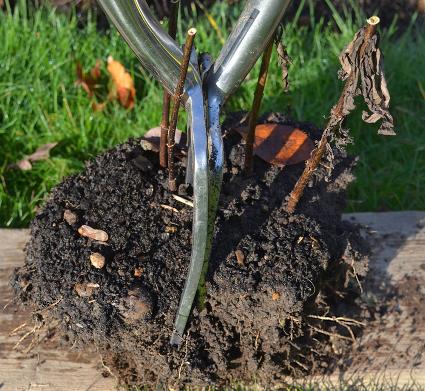
Once in a secure place spear the clump with the fork centrally. Then using a second fork “spear” the clump again so the two forks are back-to-back, and the handles are roughly 40 degrees apart. This assumes you're using forks where the prongs are at an angle to the shaft. If they are flat to the shaft this is not an issue, it just means the leverage action is slightly different.
4/. Once in position, slowly pull the two fork handles together so the fork spikes act in reverse to a ‘scissors' action. Then reversing that action, gradually pull the handles apart. Gently continue this opening and closing action until the root system separates without severely damaging the plant. Some breaking of the roots will occur, creating a ‘disquieting' cracking sound, but this is normal, and the plant will recover.
If your'e using flat forks just ease the clump apart by gently pulling the two handles away from each other.
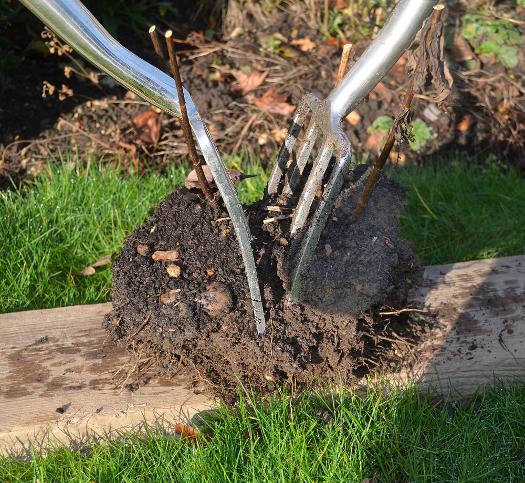
Pictures below shows the clump now divided into two. With plants that have a higher density of stems, you will be able to divide them several times for many more new plants.
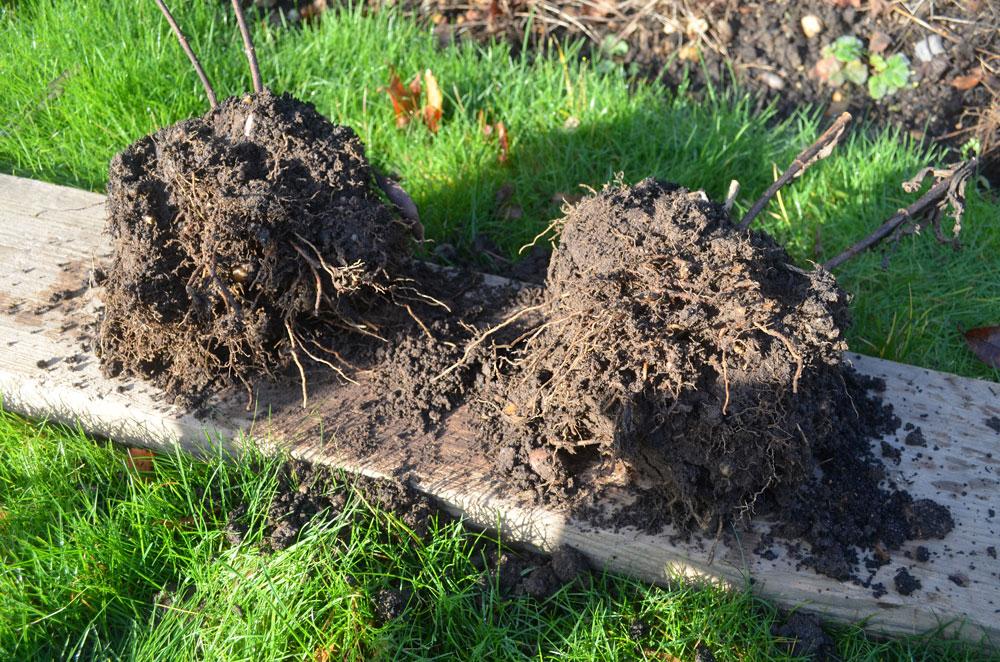
5/. Prepare the new site by digging a hole larger than the two separate clumps with space to spare and mix in half new ‘peat free' compost or garden compost, with half of the existing topsoil. This improves nutrition close to the new plant and improves drainage
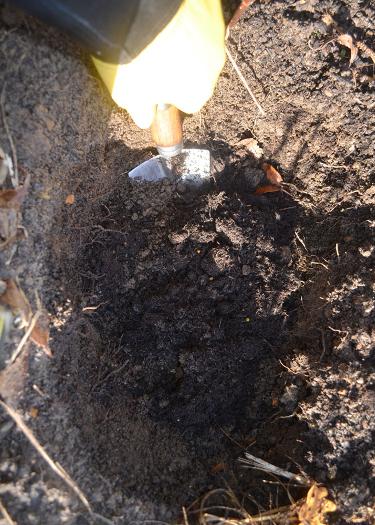
6/. Place the separated clumps slightly apart into the hole and back fill with a mixture of half soil, half peat free compost.
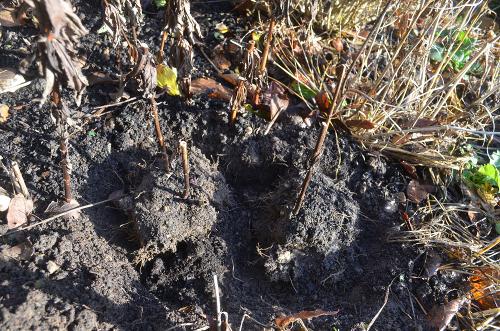
7/. Carefully firm in the surrounding soil to eliminate any air pockets and water thoroughly.
I have used this method many times in my Essex Garden and there's very little expertise required. It's a great way to save money on plants and develop your garden.
I originally started my current swathe of Veronicastrum with just 2 plants but the group now covers a much larger area and adds huge impact to the border in the summer.
Dividing plants can be done roughly every two years. Some smaller perennials have softer plant stems and can be separated more easily by hand once they've been dug up.
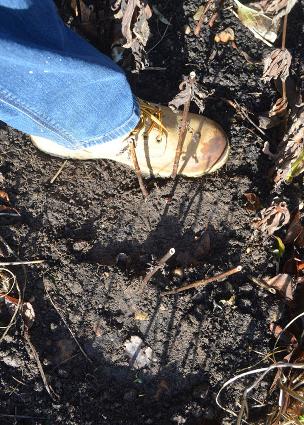
Once in its new position, with some new compost around it, the plant will begin to develop again sending up new shoots and creating more flower stems, filling the new space.
